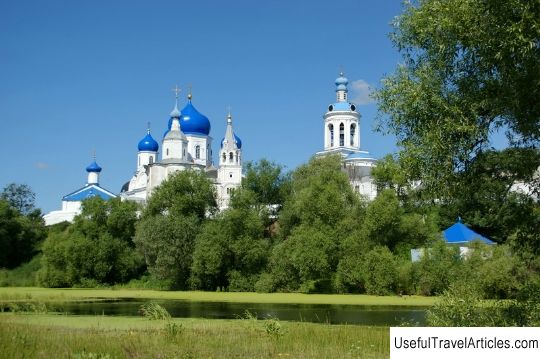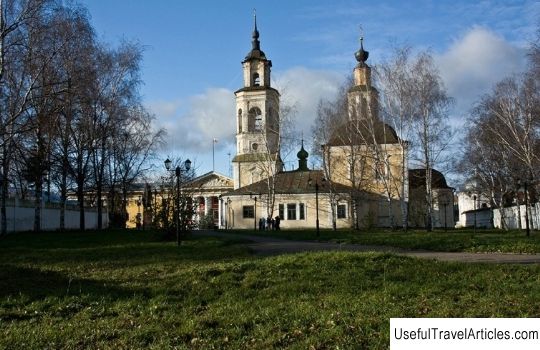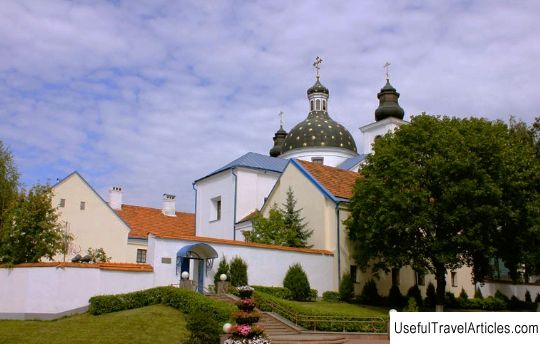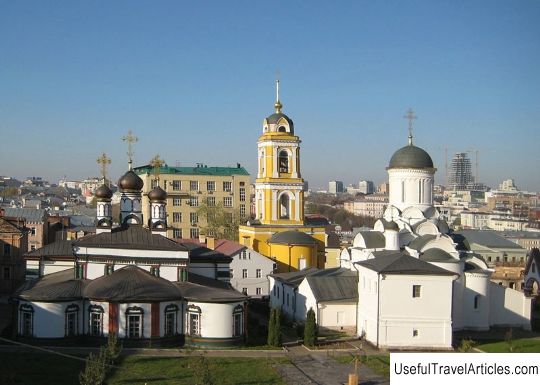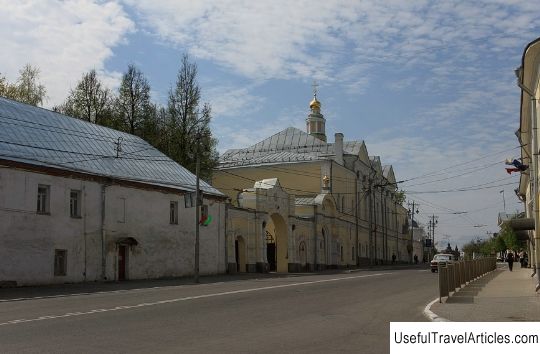Theotokos-Nativity monastery description and photos - Russia - Golden Ring: Vladimir
Rating: 9,0/10 (1445 votes) 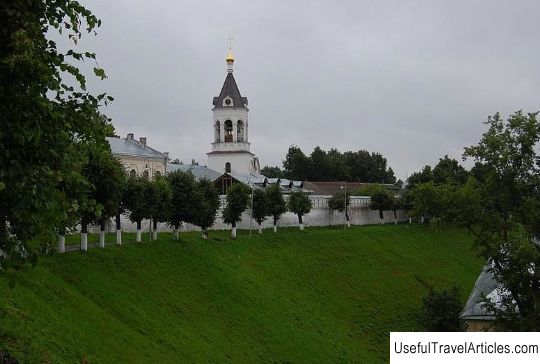
Theotokos-Nativity monastery description and photos - Russia - Golden Ring: Vladimir. Detailed information about the attraction. Description, photos and a map showing the nearest significant objects. Photo and descriptionOur Lady of the Rozhdestvensky Monastery is located in the center of Vladimir, on a hill above the valley of the Klyazma River flowing to the south from it. In the Middle Ages, it was located on the border of the Pecherny town, the rampart and moat of which on the east side adjoined its territory. From the west it is bounded by the ensemble of the St. Nicholas Kremlin Church, from the north it opens onto Bolshaya Moskovskaya Street. The monastery has an important town planning significance, it also defines the silhouette of Vladimir, and is well seen from a low river floodplain. According to legend, the monastery was founded in 1175 by the Vladimir prince Andrey Bogolyubsky. In 1192, Prince Vsevolod Yuryevich founded a hostel here, and a white-stone cathedral was erected in 1192-1196, which is a 4-pillar three-apse one-domed temple in the traditions of Vladimir-Suzdal architecture of the late 12th century (not preserved). Until 1219, some more work was carried out in the cathedral, because it was in this year that the temple was consecrated. Since 1230, there was an archimandrite in the monastery. Then the monastery became the central monastery of the entire North-Eastern Russia. In 1263, Grand Duke Alexander Nevsky was laid to rest in the monastery cathedral (his relics were discovered in 1381). The role of the first monastery of the Vladimir (and then Moscow) metropolitanate belonged to the Nativity of the Mother of God Monastery until 1561, when it became the second after the Trinity-Sergius Lavra. In the middle of the 17th century, stone construction began again in the monastery: in 1654 a bell tower was erected in the form of a high 8-head pillar with a tent, in 1659 - state cells. In 1667, the monastery became stavropegic. Under Archimandrite Vincent, in 1678-1685, stone tents were added to the cathedral, at the same time a fraternal corps appeared. In the second half of the 17th century, a stone gateway to the Nativity Church with an adjoining refectory was built, and another volume was added to the southeastern corner of the state cells. Some buildings of the 17th century were on the site of the Bishops' Chambers. In 1724, by order of Peter the Great, the relics of Alexander Nevsky were transported to the St. Petersburg Alexander Nevsky Lavra. In the first half of the 18th century, the monastery area was surrounded by stone walls with towers. Since 1744, the Bishop's House of the Vladimir diocese was located here, for this reason, in 1748, on the initiative of Bishop Plato, stone Bishops' chambers were erected. Around this period, changes were made to the decor of the tents and porch of the cathedral. In 1828-1831, the facades and interiors of government cells were rebuilt, possibly with the loss of the decor of the 17th century. In 1831-1840, under the direction of the provincial architect E.Ya. Petrov, the Bishops' Chambers were reconstructed. The next stage in changing the appearance of the ensemble was the period associated with the order of Alexander II on the reconstruction and restoration of the cathedral and monastery. In 1859-1869, according to the plan of the architect N.A. Artlebena temple was completely rebuilt in brick, in forms close to the original, but more fractional and dry. In 1859, a stone annex was built to the fraternal building, its interior and decor are changing. In 1867, the building of state cells was rebuilt, one more extension was made to it, the decor was changed. In 1866-1867, according to the plan of the same Artleben, the gateway Church of the Nativity of Christ and the refectory were seriously rebuilt. At the same time, the decor of the Bishops' Chambers was slightly changed again. In 1930, the cathedral and the bell tower were destroyed, later some interiors were changed. Later, the buildings of the monastery were repaired many times. Several new buildings were erected here. All historical buildings are made of bricks, plastered and painted. Our Lady of the Rozhdestvensky Monastery is a unique ensemble of outstanding historical significance for Vladimir and the region. The appearance of the buildings that have come down to us reflected the architecture of the 17th century (residential and civil buildings), eclecticism and baroque. Despite the losses, the monastery has retained the appearance of a late medieval monastery with a free layout.            We also recommend reading Basilica of the Blessed Virgin Mary (Romanicka bazilika Sv. Marije od Mora) description and photos - Croatia: Vrsar Topic: Theotokos-Nativity monastery description and photos - Russia - Golden Ring: Vladimir. |
